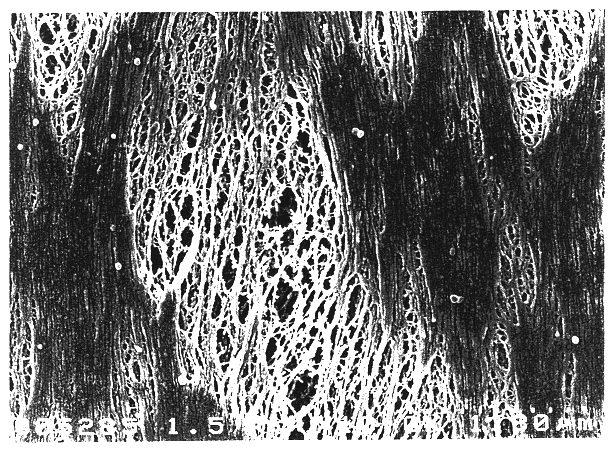Polysulfone-base hollow-fiber hemocathartic membrane and processes for the production thereof
a technology of polysulfone and hollow fiber, applied in the direction of membranes, separation processes, filtration separation, etc., can solve the problems of difficult bubble removal, inferior water-wettability of selectively permeable separation membranes made therefrom, and permeable separation membranes, so as to improve blood compatibility and improve separation characteristics
- Summary
- Abstract
- Description
- Claims
- Application Information
AI Technical Summary
Benefits of technology
Problems solved by technology
Method used
Image
Examples
example 2
In the same manner as in Example 1, except that the extraction and washing of the hollow fiber membrane were conducted with a shower of glycerin at 130.degree. C. for 3 hours in place of the shower of 40% aqueous DMAC solution at 85.degree. C. for 80 minutes, a polysulfone type hollow fiber membrane for purifying blood was obtained. The results obtained are shown in Table 1.
example 3
In the same manner as in Example 1, except that the extraction and washing with a shower of 40% aqueous DMAC solution at 85.degree. C. for 80 minutes were not conducted, a polysulfone type hollow fiber membrane for purifying blood was obtained. The results obtained are shown in Table 1.
example 4
A uniform polymer solution was prepared which was composed of 17 parts by weight of a polysulfone resin (manufactured by AMOCO PERFORMANCE PRODUCTS COMPANY, P-1700), 7 parts by weight of polyvinyl pyrrolidone (manufactured by BASF COMPANY, K-89) and 76 parts by weight of DMAC. The viscosity of this polymer solution was 1,650 mPa.multidot.s at 80.degree. C. This polymer solution was extruded, while maintained at 80.degree. C., together with a liquid in hollow composed of an aqueous DMAC solution having a concentration of 15% by weight, from a cyclic nozzle having a slit width of 59.5 .mu.m, then immersed in water at 55.degree. C. that was provided 60 cm below the nozzle, and then wound up at a rate of 70 m / min. Thereafter, in the same manner as in Example 1, a polysulfone type hollow fiber membrane for purifying blood was obtained. The results obtained are shown in Table 1.
PUM
| Property | Measurement | Unit |
|---|---|---|
| Fraction | aaaaa | aaaaa |
| Fraction | aaaaa | aaaaa |
| Time | aaaaa | aaaaa |
Abstract
Description
Claims
Application Information
 Login to View More
Login to View More - R&D
- Intellectual Property
- Life Sciences
- Materials
- Tech Scout
- Unparalleled Data Quality
- Higher Quality Content
- 60% Fewer Hallucinations
Browse by: Latest US Patents, China's latest patents, Technical Efficacy Thesaurus, Application Domain, Technology Topic, Popular Technical Reports.
© 2025 PatSnap. All rights reserved.Legal|Privacy policy|Modern Slavery Act Transparency Statement|Sitemap|About US| Contact US: help@patsnap.com



